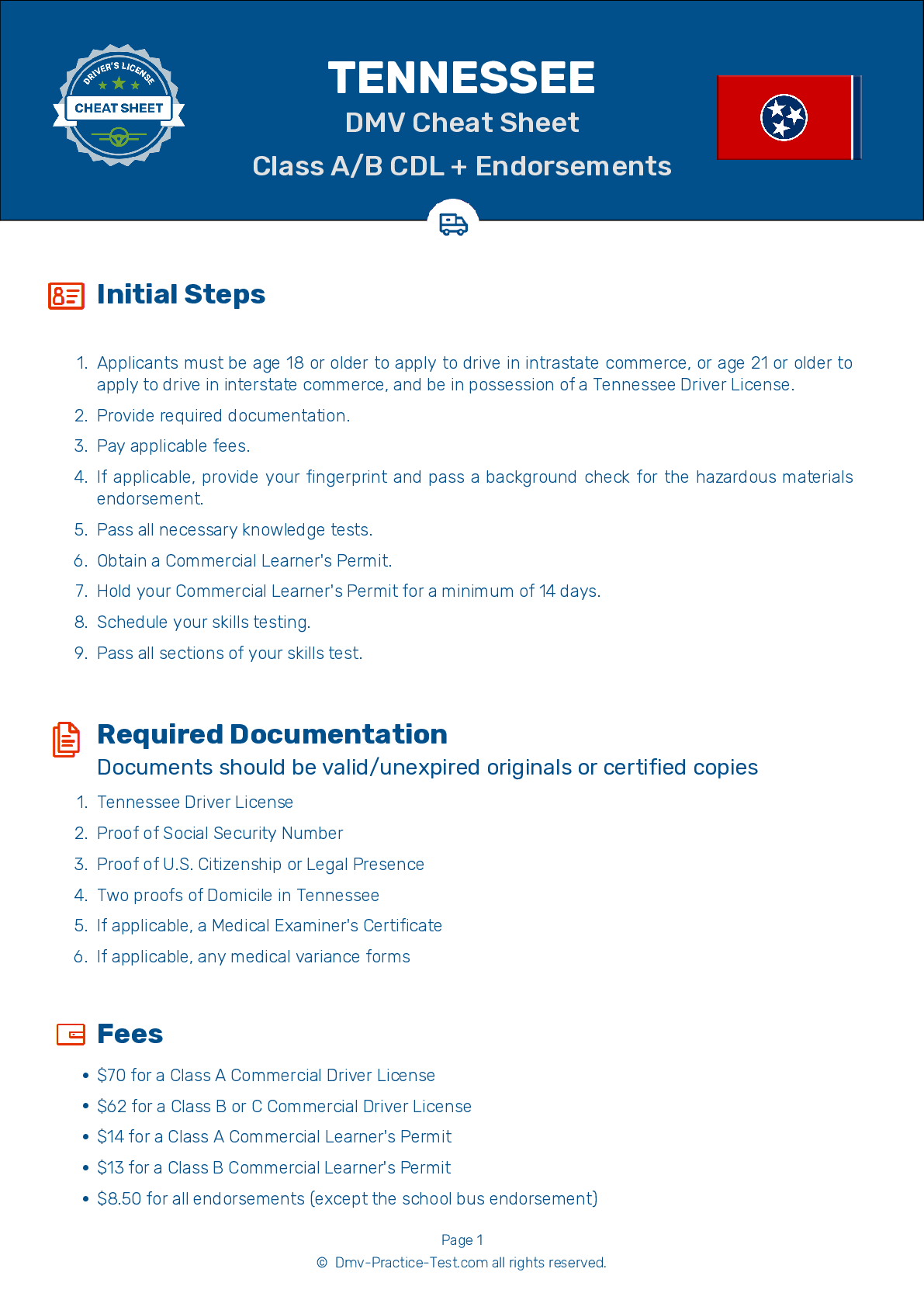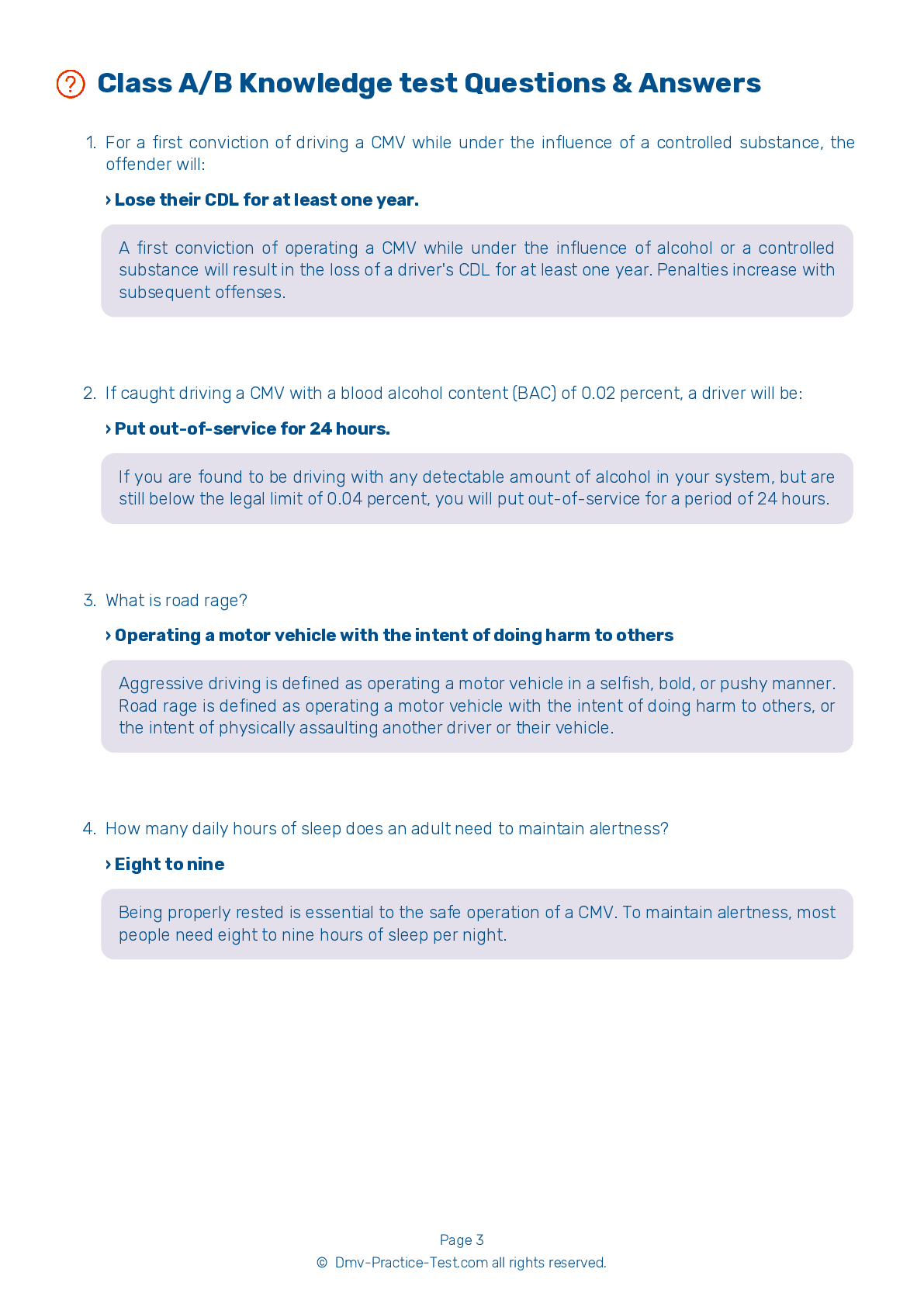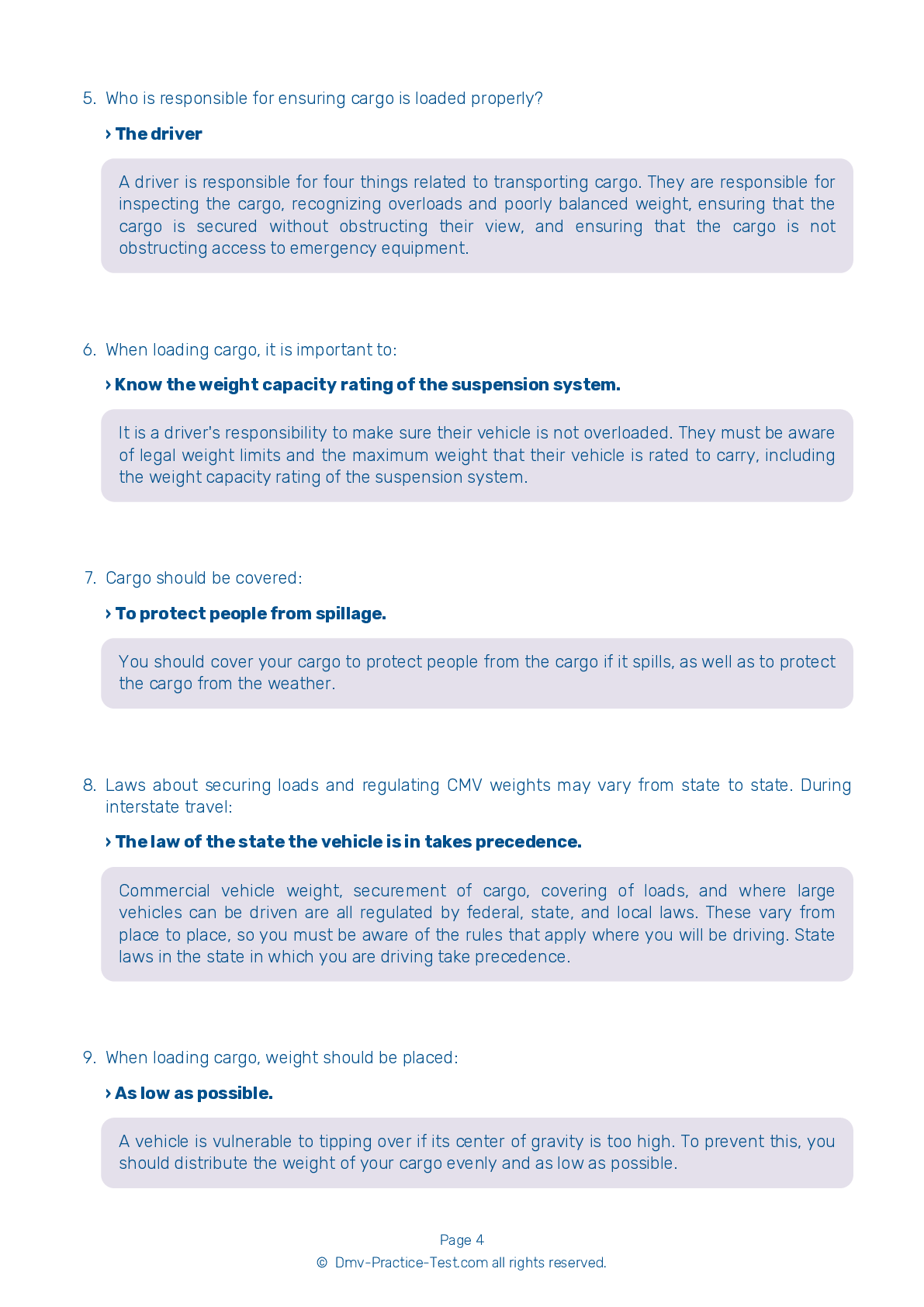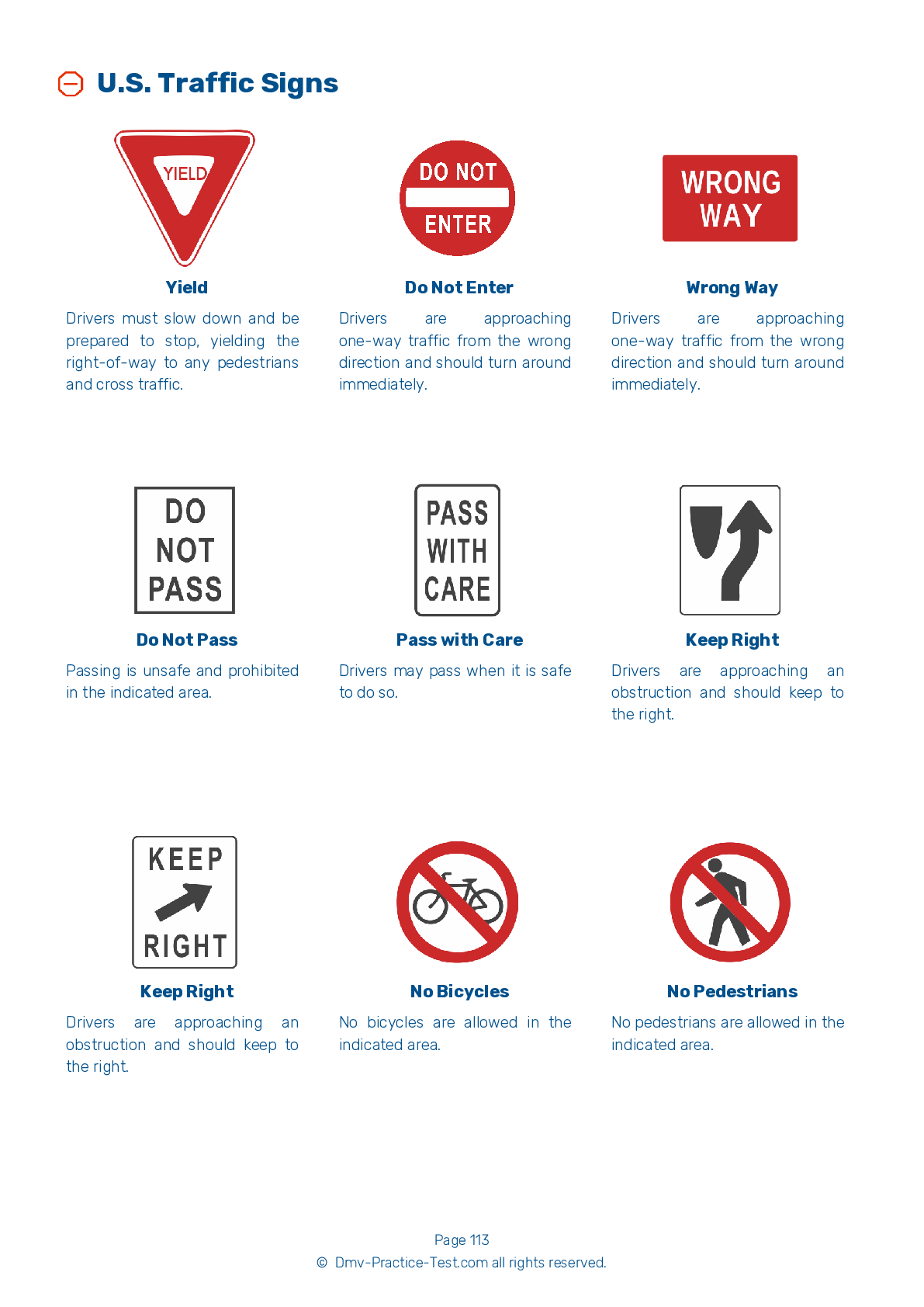Air Brakes #2
Air Brakes Endorsement Test | Tennessee 2025 #2 Page 4 of 4
Train for FREE online with our Tennessee CDL air brake test. The official exam test consists of several obligatory parts, with all of them checking your knowledge of different blocks of road rules. If you need to obtain a TN Class A/Class B driver license in 2025, practice as much as possible. Free sample tests published on our website will help you check and improve your knowledge and boost your grades. Please bear in mind that the requirements for CDL may vary from state to state.
25
20
20
19 . Dollies equipped with ABS are required to have malfunction lamps located where?
On the top
A dolly equipped with an Anti-Lock Braking System (ABS) is required to have a yellow malfunction lamp located on its left side.
20 . The air pressure in a dual air brake system should build from 85 to 100 psi within:
45 seconds.
When inspecting a vehicle with a dual air brake system, you should wait for air pressure to build from 85 to 100 psi in both the primary and secondary systems. This should take about 45 seconds.
21 . Why do you need to drain air tanks regularly?
To remove bad air from the tanks
Compressed air in an air brake system usually contains a certain amount of water and compressor oil. The water and oil can damage the brakes if left to accumulate in the system. Tanks must be drained regularly to remove this build-up.
22 . Brake linings should be:
Brake linings should not be loose or soaked with oil or grease. They shouldn't be dangerously thin.
23 . Front brake limiting valves were intended to:
Remove uncertainty when applying the brakes.
Some older vehicles with air brakes have front brake limiting valves. These valves were intended to reduce the risk of front wheels skidding. However, research has shown that such devices are unnecessary, so they should be left in the "normal" position.
24 . Air tank drains:
Must remain open while driving.
In an air brake system, the air tanks are equipped with drains that allow water and compressor oil to be removed from the system. If allowed to build up, water and compressor oil can damage an air brake system.
25 . The ____ between an air compressor and reservoir tank prevents air from escaping if the air compressor has a leak.
A one-way check valve is required to be between an air compressor and the first main reservoir. This valve prevents air from escaping the system if the air compressor develops a leak.
2025 Tennessee | Frequently Asked Questions
To acquire a CDL Hazmat endorsement in Tennessee, you need to pass a written test, submit fingerprints for a TSA background check, and pay applicable fees. You must already have a valid CDL. You can prepare for the test by studying the Hazmat section of the Tennessee CDL Manual. It's recommended to schedule your test at a local DMV office.
To obtain a CDL Hazmat license, you must already hold a valid Commercial Driver's License (CDL). You'll also need to pass a written Hazmat knowledge test, submit fingerprints for a Transportation Security Administration (TSA) background check, and pay the required fees. Additionally, you must be at least 21 years old and be able to read and speak English well enough to do the job.
When applying for a CDL Hazmat endorsement in Tennessee, you'll need to provide your current valid Commercial Driver's License (CDL), proof of U.S. citizenship or lawful permanent residency (like a passport or birth certificate), and proof of Tennessee residency. You'll also need to complete the TSA security threat assessment application and provide fingerprints for a background check.
Yes, there is a dedicated written test for the CDL Hazmat endorsement. The Hazardous Materials Endorsement Knowledge Test covers specific regulations and procedures related to transporting hazardous materials. The test typically includes questions about loading and unloading, bulk packaging marking, driving and parking rules, and emergency response procedures.
The written test for the CDL Hazmat endorsement covers a variety of topics related to hazardous materials. These include identifying different types of hazardous materials, understanding placarding and labeling requirements, knowing how to safely load and unload hazardous materials, understanding emergency procedures, and being aware of the rules for transporting hazardous materials.
Yes, obtaining a CDL Hazmat endorsement involves additional costs. In Tennessee, there's a $5 fee for the knowledge test and a $66 fee for the Hazardous Materials Endorsement Threat Assessment Program (HME TAP). The fees are subject to change and it's advisable to check with the local DMV for the most current charges.
Yes, a background check is mandatory for a CDL Hazmat endorsement. The Transportation Security Administration (TSA) conducts this check. It involves a review of your criminal history, immigration status, and possible connections to terrorism. A fingerprint-based check is also part of the process. This is to ensure the safety and security of hazardous material transportation.
Yes, specialized training is required for the CDL Hazmat endorsement. Applicants must pass a written test specific to hazardous materials. The test covers relevant topics such as identifying hazardous materials, understanding safety procedures, and following transportation regulations. This knowledge ensures the safe and legal transport of hazardous materials.
No, you cannot legally transport hazardous materials without a valid CDL Hazmat endorsement in Tennessee. The endorsement is required to ensure that drivers have the necessary knowledge and skills to handle and transport hazardous materials safely, in compliance with federal and state regulations. Violating these regulations can result in serious penalties.
You can add the CDL Hazmat endorsement to your existing CDL license. You don't need to apply for a new license. However, you are required to pass a written Hazmat knowledge test and undergo a TSA background check. Once these are successfully completed, the endorsement will be added to your current CDL.



